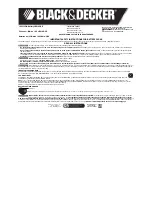
F3 Series Charger Manual
6
Caution: Do NOT connect the battery backwards; charger damage may result
The voltmeter will show battery voltage as soon as the DC connection is completed.
Check the voltmeter
as soon as the DC connection has been made.
If the meter reads zero or is deflecting below zero, reverse
the polarity of the battery connections.
2.3
Alarm Connections
F3 chargers are supplied with one of three following alarms configurations:
TABLE 2.3
Charger Part Number Suffix and Alarms Configuration
Second digit of part number suffix (e.g. "F
5
E2")
Alarms “0”
Alarms “5”
Alarms “6”
< Alarm system code
Indications
none
Float or boost mode
Float or boost mode
LED
none
AC fail
AC fail
LED & Form C contact
none
Charger fail
Charger fail
LED & Form C contact
none
Low battery voltage
Low battery voltage
LED & Form C contact
none
High battery voltage High battery voltage
LED & Form C contact
none
none
Ground fault LED
none
none
Ground fault -
LED
none
none
Ground fault + or -
Form C contact
none
Summary of above
Summary of above
Form C contact
Connect to the charger’s Form C contacts according to Figure 2.3
1. Make connections to the system's Form C alarm contacts as shown.
2. Run alarm wiring out of the charger separately from the AC supply wiring
3. Use 16 to 22-gauge wire.
4. NOTE: Do not exceed the relay maximum current rating of 0.5A @ 117 VAC or 1A @ 24 VDC.
The remote alarm connection board is located on the circuit breaker pan, adjacent to the control board.
See Figure 2.3 on next page.
FIGURE 2.3
Remote Contact Terminal Block
FA
IL
O
K
CO
M
GROUND
FAULT
AC
FAIL
CHARGE
FAIL
LOW DC
VOLTS
HIGH DC
VOLTS
LOW DC
DISC.
OPTION
SUMMARY
FA
IL
O
K
CO
M
FA
IL
O
K
CO
M
FA
IL
O
K
CO
M
FA
IL
O
K
CO
M
FA
IL
O
K
CO
M
FA
IL
O
K
CO
M
FA
IL
O
K
CO
M
2.4
Temperature Compensation
F3 chargers include battery temperature compensation (TC). TC is required by all batteries for maximum
performance and life. The TC feature automatically reduces the charger’s output voltage at high
temperatures and vice-versa.






































